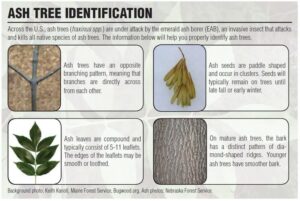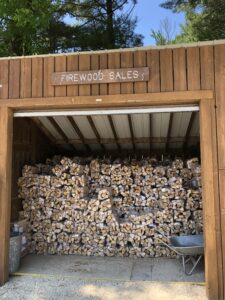By Bill McNee, forest health specialist, Oshkosh, bill.mcnee@wisconsin.gov, 920-360-0942
This November, hunters should avoid placing tree stands in or near ash trees, especially in the southern half of Wisconsin, Door County and the Mississippi River counties. Most ash trees in these areas are dead or dying from infestation by emerald ash borer (EAB) and may unexpectedly snap or drop large branches. Place deer stands in non-ash trees to keep yourself safe from infested ash this hunting season.

A photo guide to identifying ash trees.
Since tree stand accidents are the leading cause of serious injury for deer hunters, it is important to carefully place and maintain tree stands this hunting season. At this time of year, it can be hard to tell if a tree is infested by EAB. As a precaution, place a deer stand in another type of tree instead. Hunters are also encouraged to be careful around ash trees when on the ground, especially in windy conditions, as infested trees are highly susceptible to breakage. More on ash tree identification is available here.
When obtaining firewood for hunting trips, outdoor recreation or household heating, it is important to be proactive and reduce the spread of invasive pests that threaten forests, parks and backyards. Get your firewood near where you will use it instead of bringing it over long distances. This reduces the chance of introducing EAB, gypsy moth and other harmful pests to new areas. Look for aged, dry firewood, especially wood with loose bark, since it has the lowest risk of being infested.
Purchasing certified firewood is another option. Certified firewood has been seasoned or treated to eliminate pests and diseases. Bundles of certified firewood have a printed label showing certification. Some of the retailers that sell certified firewood can be found on the Firewood Scout website.

Firewood bundles for sale.
Additional information about known EAB infestations, moving firewood and signs and symptoms of EAB can be found at the DNR EAB webpage.
